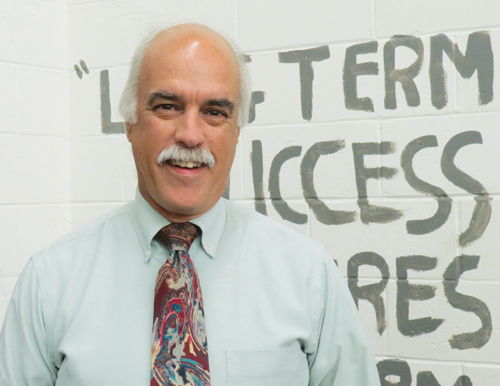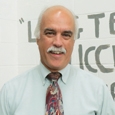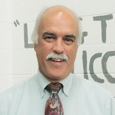
The success or failure of any program is determined before a note is taught. We invest countless hours preparing students for performances, but it is also important to consider how much time and effort to invest in planning those performances. The day after a concert may be the first time some teachers consider what they are doing for the next one. As a young teacher, I fell into this trap too often. The concerts would be successful enough, but there was a sameness and no sense of an end game. If Tune X was successful, then Son of Tune X would be great for the next concert. However, there is a better way than lurching from concert to concert.
How and What to Plan
My approach started to change when I studied in the University of Massachusetts band program under Bill Rowell and also took a look at successful marching design projects. I learned that the successful marching programs started with a top-notch arranger, to whom the decision-makers listened intently. The focus was to put the highest quality of music on the field. With the UMass concert band program, everything started with great composers. In all cases, planning started well in advance and with the big projects firmly in sight. Drum Corps International Hall of Fame member Jim Prime did everyone one better. He entered every new project with a three- or four-year plan. The specifics might change a bit, but the big picture didn’t. One aim of his was to eventually get to the Alexander Nevsky Cantata, but to get there he wanted his group to go through Mussorgsky and Rimsky-Korsakov.
Where to Go
Programming is ongoing for me. The process is slightly different for concert band and jazz, but the result is the same. Every official beginning starts with a reread of dance director Twyla Tharp’s The Creative Habit. This wonderful book offers a grounding in the process and method of programming, including creating threads within a program and methods of jumpstarting creativity.
For concert band, programming starts in earnest at the Midwest Band Clinic in December, although I search for literature all year long. I will listen to anything once. During the spring I make a big list for both the freshman/sophomore band and the junior/senior band. My list consists of every piece I have always wanted to conduct for these ability levels. The list is culled down to what is practical, and from this comes one piece for each group that will be the culmination of the year’s teaching. It is akin to building a pyramid by starting with the pinnacle; from this final piece I work down to where we will begin.
How to Get There
For this year, the goal for the ninth and tenth grade ensemble’s final concert is Michael Boo’s Dragon Boat Festival. This was the less-experienced group’s first venture into grade 4, made particularly interesting by the aleatoric percussion, transparent textures, and use of pentatonics. We played pentatonics in warmups all year, so this was a practical application of that scale as well as an opportunity for percussion to really stretch. In this approach to programming, the bridge pieces are crucial. The perfect set-up for the Boo piece was Clare Grundman’s Irish Rhapsody. It is listed as a grade 3, but frequent key, tempo, and style changes make it a perfect bridge to Dragon Boat Festival. To get into the Grundman, we began the year with Pierre LaPlante’s American Sketches, a beautiful three-movement setting of three strong folk tunes. Middle school students rarely play multi-movement works, so this piece is a perfect table-setter for freshmen. The movements are short – approximately two minutes apiece – and the technical demands are modest.
For the 11th and 12th graders, this year’s end piece was John Barnes Chance’s Variations on a Korean Folk Song because of the technique involved in the first variation and the mature playing required to make all the style changes convincingly. It is listed as a grade 4, but musically the demands are greater than that. This was set up in the first concert by Malcolm Arnold’s Prelude, Siciliano and Rondo. The object was to establish a foundation for lyrical playing, balanced with a bit of technical playing. The Rondo was an early season foundation for the technical parts of the Chance. The piece to get us from the Arnold to the Chance was a commissioned work by Andrew Boysen, The Murderer and the Architect. This piece is based on the wonderful Erik Larson book, The Devil in the White City, which is the true story of H.H. Holmes, a serial killer who operated during the 1893 Columbian Exhibition in Chicago. The Boysen set up the Chance because it is a one-movement piece with a great deal of independent playing. The chamber playing and what Boysen describes as creepy writing stretched students beyond what we did in the first concert and paved the way for a confident performance of the Chance.
Filling in the Gaps
I lay out the entire year of concert programming in late spring. Occasionally I write titles on recipe cards and shuffle these around until everything fits well. For a while my kitchen table looks like a patchwork quilt. Then, if necessary, I do a second draft. Replacing one piece frequently changes a whole program.
The major focus is to make sure that the big pieces are the ones that connect the dots. The march for the first concert isn’t designed to get us to the last concert’s march. The rest of the pieces I pick for concerts simply follow elements of good concert programming. However, it is just as important to plan ahead with these pieces as it is the major ones. It is easy to fall into the trap of programming the entire year only to realize you haven’t done a march or some other style of piece that students should know. This is also the time to make sure everything else fits with the major piece.
When planning concerts, do not neglect the audience members. One of the problems with concert band programming is that there is sometimes a disconnect between the audience and performers. Students should have the opportunity to play the best possible literature, but it is easy to fall into the trap of playing only extremely contemporary pieces and miss the opportunity to play a march or something with popular appeal. This is always the tightrope we walk between the educational value of what we’re doing and the audience, but it is no new philosophy. It goes back to Frederick Fennell and how he tried to program for the Eastman Wind Ensemble.
Take Advantage of Summer
When the program is set, I order copies of the scores to have before summer vacation starts. Summer is the time to clear the decks and concentrate solely on the music. Being timely is important; avoid starting the next school year without already having studied scores or developing a firm idea about where you are going. Working this way makes score study more relaxed and thoughtful. Frank Battisti’s approach is great: Read through the scores many times like a book to get the lay of the land. No metronome, no baton, no marking pencil. Then, you are ready to begin the process of serious score study. Another advantage to an early start is that you can write program notes during summer study, making things much less frantic just before concerts.
Once rehearsals begin, adjustments in programming may be necessary. A group may exceed expectations or a piece may be a poor fit. At these times, heed your gut instinct. Be flexible and acutely aware of whether the concert program feels right. The point is the process. The best way to improve the quality of the music program is to have a strong sense of destination and a path that makes it possible to dream big. To be educationally sound, programming must be a continuum: long-range goals and short-term strategy.
* * *
Working Backward from the Goal
Goal Piece: Final Concert
Variations on a Korean Folk Song
Highlights
Takes mature playing, excellent technique, ability to handle style changes.
Second Concert
The Murderer and the Architect
Highlights
Long one-movement piece similar to Variations, teaches students to play independently, the writing stretches students musically beyond styles they may be used to.
First Concert
Prelude, Siciliano, and Rondo
Highlights
Movements in different styles, piece establishes a foundation for lyrical playing. The Rondo movement is extremely technical for the grade level.






